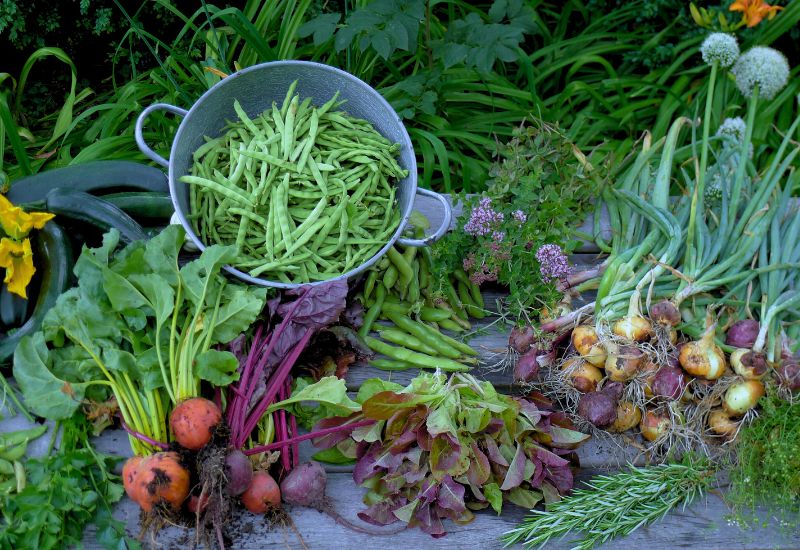
Even as the traditional gardening season starts to wind down, there are vegetables to plant in the fall for a spring harvest. Many people don’t realize that seeds and plants can grow in snow and cold temperatures.
Fall can be a busy time in the garden. Many of your summer crops are winding down, producing their final harvests. You’re taking the time to preserve the last of your bounty, and you’re preparing the garden for the winter.
Make sure you take the time to plant seeds that you’ll be able to harvest come springtime.
Planting seeds only take a few minutes, and it’s worth the effort when you have early fresh vegetables before the other gardeners in your area.
Here are some tips, including vegetable plant varieties you should plant in fall for a bountiful spring harvest.
When to Plant Seeds in the Fall

Typically, these plants won’t be harvested in the winter unless you live somewhere with a very mild climate or a cold-frame that works well at keeping your plants warm. Most will be collected in the early spring, around March or April.
You’ll want to plant the seeds when the temperatures are still between 50-60℉. At these temperatures, the soil is still warm enough to encourage relatively quick germination.
It’s okay if the temperatures fluctuate through the day and night; you don’t want the first frost to hit just yet.
During this time is also an excellent time to plant bulbs that will flower in the spring. It takes some of the work out of spring gardening!
The soil and air temperatures are still efficient for germination, but it’s much easier to keep the soil moist at this point. Rainfall tends to become more frequent at this time as well, encouraging faster germination.
Consider Your Region
Before you try growing vegetables in the fall for a spring harvest, you do need to think about where you live. You need to pick the right veggies for the winter in your area.
Pacific Northwest And West Coast
In these regions, the temperatures are moderate so that you can grow greens and brassicas, such as broccoli and cabbage. Growing in raised beds is wise because it helps prevent slugs, which are common in the winter.
Southwest, Gulf Coast & Coastal South
These regions are known for their hot climates, so it’s actually preferred that you plant in the fall for a winter harvest over spring planting for a summer harvest because you have cooler temperatures. Broccoli, spinach, peas, and leafy greens grow well.
Rest Of The Regions
Yes, we have to lump the rest of the continental United States together because the climates here are a gamble when it comes to spring plantings. These areas have snow, frost, cold temperatures, and frequent thawings that can be problematic.
Using cold frames are ideal, which allows you to grow things like leafy greens and cabbages all year round.
13 Vegetables to Plant in the Fall for a Spring Harvest
Let’s take a look at the different types of vegetables that you can plant in the fall and harvest in the spring. You might be surprised that there are so many options!
1. Onion
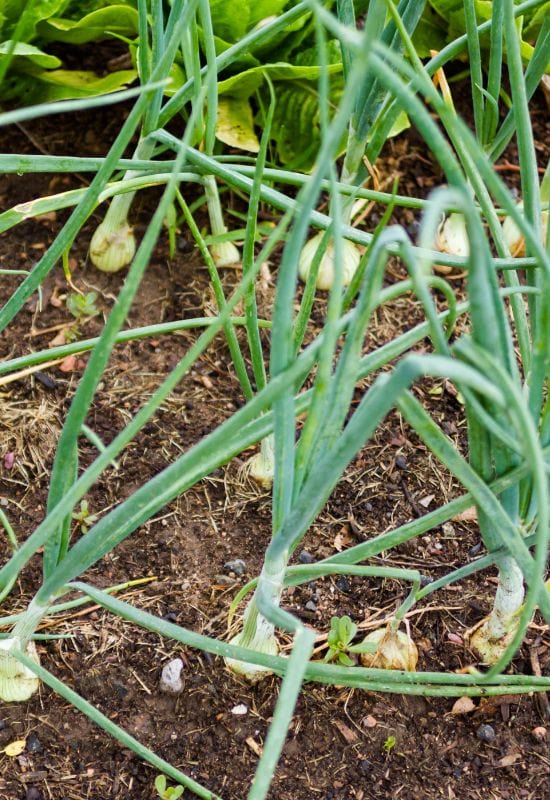
Both and onions and garlicbelong to the alliums family, and they all have a long growing season. If you don’t plant in the fall, you would have to wait until the winter to be able to eat if you tried to wait until the spring to plant them.
A fall planting allows you to harvest the onions in the following summer. Yes, it takes that long for them to grow and develop! Winter onion varieties are a plant and forget about them crop, making them quite easy to grow.
Onion sets need plenty of fertilizer and mulch to suppress the weeds, along with well-draining soil. Mulch protects the onion sets from the snow and frost as well as stopping weed growth.
Be sure to do so before the first frost of the season hits when you plant onions in the fall. Onion sets need time for the roots to grow and establish before the soil freezes. Once established, onions and shallots are hardy, capable of surviving and thriving throughout most temperatures.
One tip is to be sure that you know where you planted your onions! Sometimes, they might not sprout of the ground until early spring. So, you might accidentally plant carrots in the same area.
If you’re searching for an ideal overwinter allium, consider growing Egyptian onion that produces clusters of baby onions that take roots.
They’re a perennial, so an ideal choice for home gardeners. The only negative is that they don’t produce in their first year, but they can survive -24℉ and being buried under snow.
2. Shallots
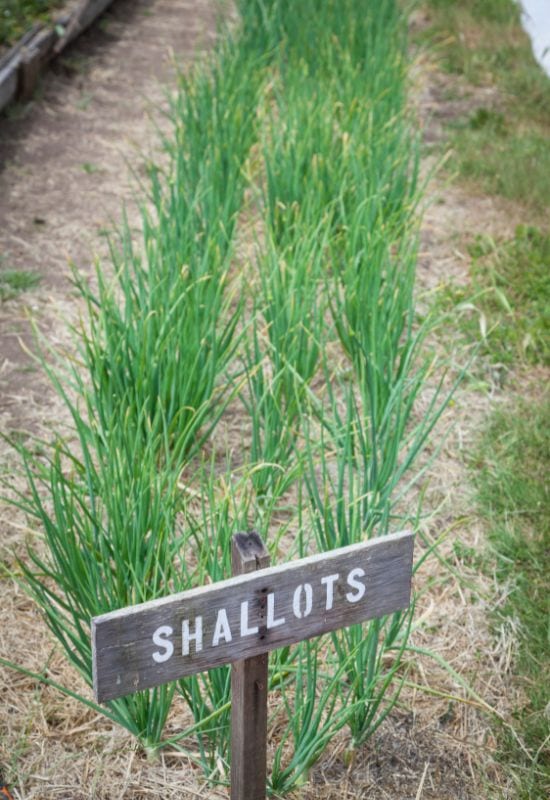
The bad thing about growing onions is that they take what feels like forever to harvest. If you want an earlier crop, you can try a smaller allium, such as shallots. Shallots are a clumping allium, so they grow in groups together.
It’s recommended that you hold back the biggest from each clump to replant the following year.
They follow the same growing requirements of onions, and they grow wherever onions do well.
They can be planted in the fall and harvested in early to late spring, which is perfect for the spring dishes you want to cook!
3. Garlic
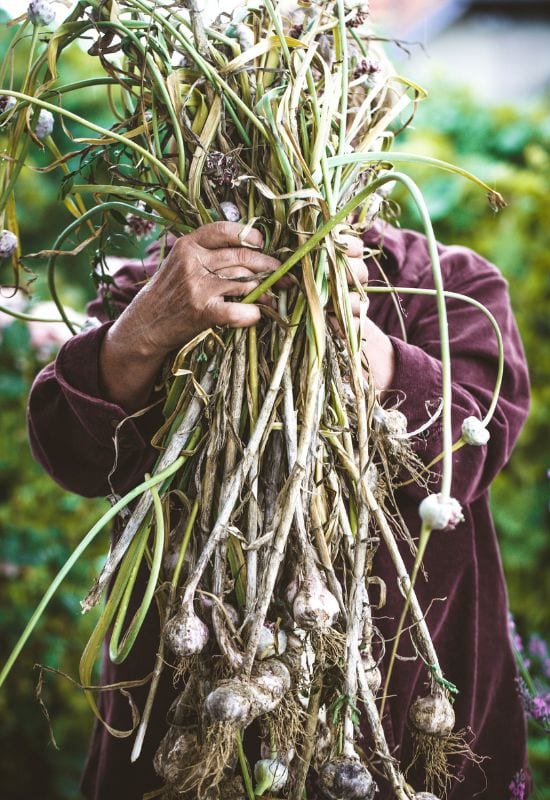
When you talk about vegetables to plant in the fall for a spring harvest, garlic is almost always for most gardeners. Not only is it one of the most common vegetables to use in cooking, but it’s a medicinal plant that can hold off colds and the flu.
Garlic also has one of the strongest abilities to withstand the winter. The best time to plant garlic is in late September after the fall equinox.
After you plant your garlic bulbs, lay down 6-8 inches of mulch over the top of the cloves. Doing so protects the garlic cloves from the frost.
If you plant hardneck garlic varieties, you’ll be able to harvest garlic scapes in May and early summer. Then, the garlic bulbs will be harvest in the summer.
It’s worth the wait; you’ll be able o tell the difference in taste between homegrown garlic and the ones from the store. Homegrown garlic is delicious!
4. Spring Onions
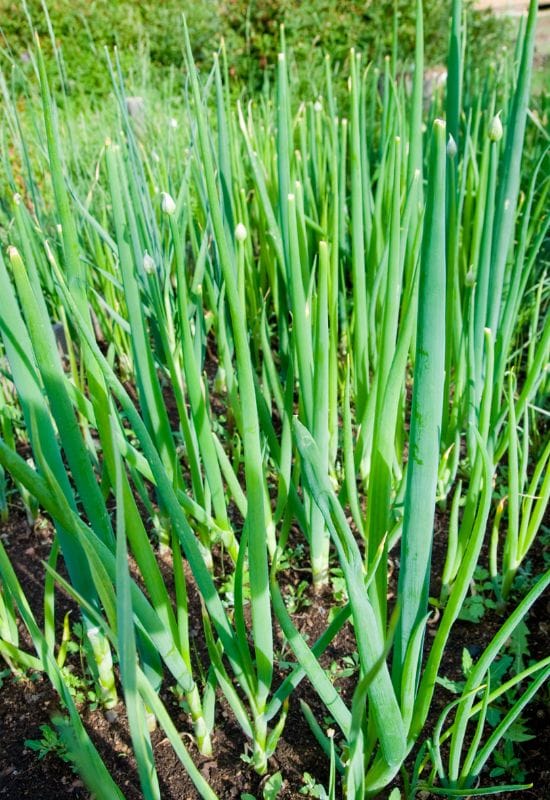
Often called scallions or bunching onions, these are one of the first foods that you can harvest after the snow resides.
Spring onions are one of the first greens to pop up in your garden, before ramps, which are among the earliest spring veggies.
Spring onions aren’t as hardy as onions, but in most locations, the roots survive a winter. If you sow them in the early fall, you can harvest in the early spring.
Planting in early fall also helps the roots establish and grow before the winter hits.
5. Asparagus

Growing asparagus takes patience and plenty of time. It takes at least two years to harvest your first asparagus, but it can take even longer to have a full harvest.
Fresh asparagus is worth the wait, though! Once established, an asparagus plant can produce for 25 years or longer, especially if it’s well-maintained.
6. Turnips
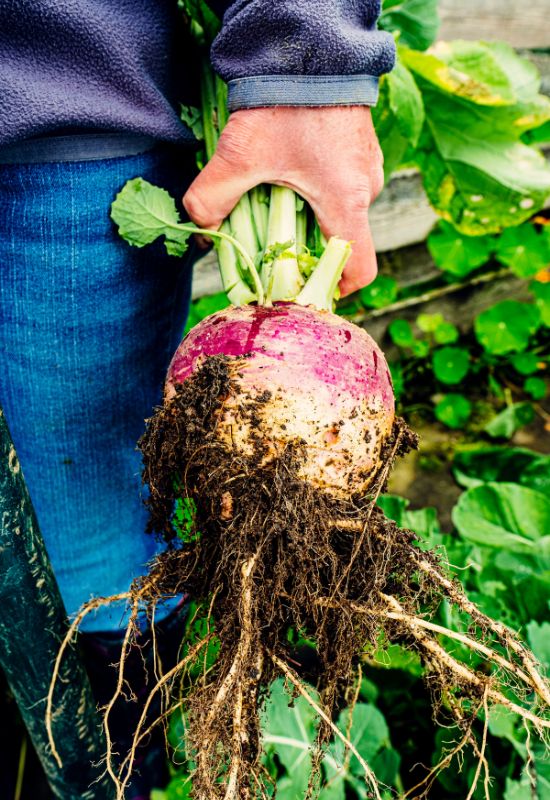
Nowadays, turnips aren’t on the list of most commonly eaten vegetables, but years ago, gardeners grew them because of its hardiness.
It’s considered a survival plant by many or a plant dedicated to livestock consumption, but turnips don’t need to be a last-ditch effort for food.
7. Carrots
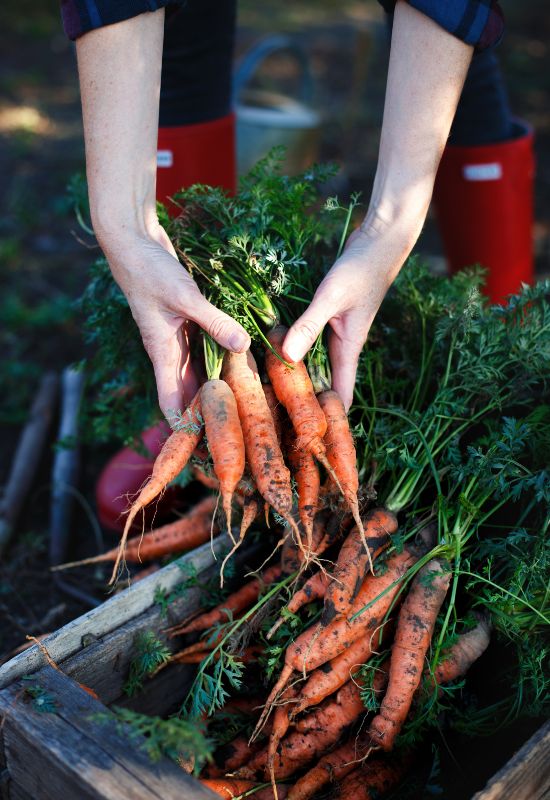
This spring, as I was cleaning out my garden bed, I found dozens of carrots that I missed from the fall harvest. These carrots were perfectly edible and survived our Ohio winter without any problem.
Carrots don’t grow much over the winter, so it’s best to sow them in early fall, giving them plenty of time to grow before cold weather hits your area.
If you want to sow the seeds in late winter, just expect the greens to be one of the first things to pop up in your garden when spring arrives.
8. Winter Lettuce
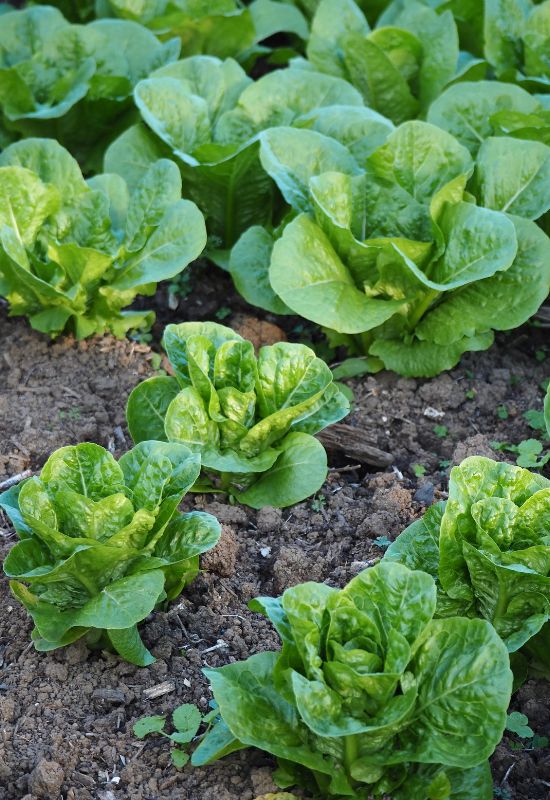
You might not realize that you can grow lettuce in the winter, but you can! Typically, lettuces need to be grown in a greenhouse or a cold frame, giving you fresh lettuce all year-round.
Look for lettuce varieties that don’t mind cold temperatures Winter gem lettuce is known for its old hardiness. Still, you also can try growing endive, radicchio, and watercress in the fall.
One of my favorite salad leaves to grow is arugula. It has fast germination, and you can start harvesting 30 days after planting the seeds.
You can plant the seeds under cold frames and harvest in the spring. Another option is to preseed some arugula in a sunny spot so your crop can start to develop as soon as the weather gets warmer.
If you’ve yet to try arugula, it’s hard not to like it! It has a delicious peppery taste that adds some fantastic flavor to your salads.
9. Radicchio

If you’re looking for a strong-flavored salad green, radicchio is a frost-tolerant choice that can survive the winter.
Not only does it add a unique taste to your salad, but it adds color and texture. Young radicchio can be used as a cut and come again crop.
If you have a cold frame, you can grow it all through the winter, so long as you don’t have sub-zero temperatures. Cold frames keep greens alive all year round.
10. Leafy Greens
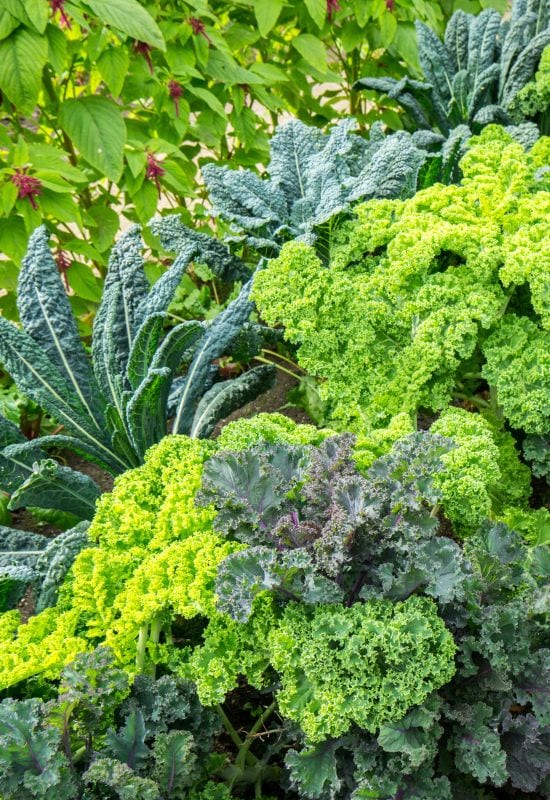
Kale and collards are two leafy greens that taste great but also have the ability to withstand cold temperatures. That’s why kale always tops the list for those who practice winter gardening, especially in cold frames. You can almost always harvest kale no matter the temperatures outside.
Not only do these fall-planted survive in the cold and snow, but their flavor improves in cold temperatures. Another reason you’ll want to consider adding these leafy greens is that they’re cut and come again plants. You can harvest throughout the winter right into the spring.
Leafy greens do exceptionally well outside, especially if you mulch around the base of the plant. Doing so helps to protect the plant from chilling frosts.
11. Broccoli and Cauliflower

If you live in mid to warmer climate zones, broccoli and cauliflower can be grown over the winter and be harvested in the spring.
It’s worth looking for varieties that are cut and come again rather than a single harvest; these are typically easier to grow.
When you overwinter broccoli, it starts to grow and flourish as spring gets closer. You can add some mulch around your plants to help their growth continue.
Make sure you remove the mulch as the weather starts to warm up. These are cool-weather crops, so you don’t want them to get too warm.
12. Peas and Broad Beans

Depending on where you live, those with mild climate zones can plant peas and broad beans in the fall for an early spring harvest.
When you plant peas in the fall, you’ll be able to harvest at least a month before the spring planting of the next round of peas.
The only thing that will make winter growing of peas and broad beans is that they don’t want waterlogged soil. You can try planting early and late varieties of peas and broad beans to see what works best in your garden and location.
13. Cabbage
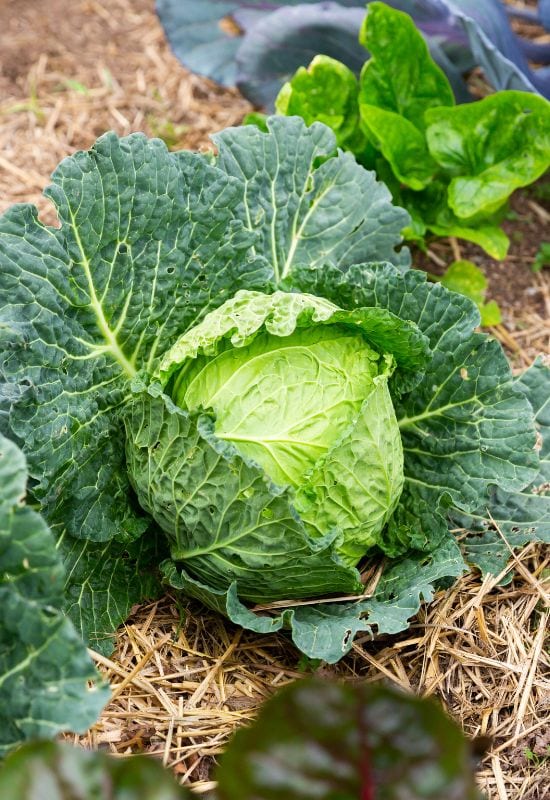
That’s right; in many locations, growing cabbage from the fall to the spring is no big deal. Cabbage does need some protection from the extreme cold temperatures of winter, but they’ll continue to grow and make it through the cold months until you can harvest it as a spring crop.
Cabbages are single-harvest vegetables, so it’s typically a good idea to either plant at different times or plant different types of cabbage to ensure that you aren’t harvesting the heads all at once. Try a mix of shorter and longer growing cabbage varieties.
Make sure to remember that cabbages are heavy feeders. You’ll need to prepare the beds with plenty of compost, and practice crop rotation.
If you continue to plant cabbage in the same area, you increase the risk of diseases passing from one year’s crop to the next.
Try Winter Gardening
Even if you live in a cold region, the use of season extenders, such as cold frames, can help you grow vegetables throughout the winter.
Consider these vegetables to plant in the fall for a spring harvest; they can withstand the cold. Come spring, you’ll appreciate the extra work you took in the fall.

Written By
Bethany Hayes
Bethany is a suburban homesteader, growing over half of the vegetables, fruit, and herbs that her family of six needs each year. She raises chickens and homeschools her children. When she isn’t spending time tending to her garden, you can find her reading, crocheting, and canning.

I live in Connecticut and I have been told that potatoes can be added to this list. I have so much to do in the spring that it would be very helpful if planting potatoes in the fall for late spring harvest can actually be done. Have you heard of this? If so, what can you tell us about it? Thanks
Yes, I was just reading a great article about planting potatoes in the fall. The trick is to dig a 10-12″ trench. Fill it with 4-5″ of decomposing organic matter (food compost, grass, leaves etc.), Then layer potatoes, then another 4-5″ of decomposing organic matter. Then mound with soil and straw. The idea is that as the organic matter continues to decompose it generates enough heat for the spuds to grow over winter. I am going to give it a try this year